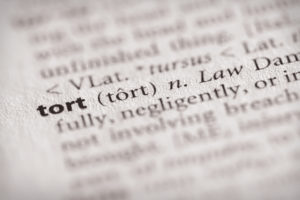As Merck & Co. defends itself against a deluge of litigation involving its pain reliever Vioxx, the pharmaceutical giant also is fielding the first of what could be another wave of lawsuits involving Fosamax, its second-biggest seller.
The emerging litigation targeting the osteoporosis drug, still in its early stages, illustrates how quickly Plaintiffs can organize themselves and assemble prospective lawsuits concerning adverse drug effects — even if those problems appear to be relatively rare.
According to an article in the Los Angeles Times, reports in the last few years have linked Fosamax and similar drugs, known as bisphosphonates, to a serious side effect in which the jawbone partially crumbles and dies. Researchers agree that the incidence of this problem, called osteonecrosis, is quite small.
“It’s too early to tell whether these cases will be successful,” said Edward Weltman, a San Francisco defense lawyer who represents drug makers. “But as soon as there is publicity about any kind of possible problems with a medication, the plaintiffs get geared up.”
Merck spokesman Skip Irvine says that Fosamax is safe and effective in treating osteoporosis and that the company “will vigorously defend ourselves against these suits.”
“Osteonecrosis is very rare and not well understood,” Irvine said, noting that in controlled clinical trials involving more than 17,000 patients, there had been no reports of the malady.
Ethel Siris, a professor of medicine at Columbia University College of Physicians and Surgeons who has also consulted for Merck, said new research studies were underway to understand what triggers the onset of this jaw problem.
In the meantime, she said, she tells her osteoporosis patients that the benefits of the bisphosphonate drugs greatly outweigh their risks.
Fosamax is probably the best-known brand-name drug for preventing hip fractures and deteriorating bones that often destroy the quality of life for older women.
Millions of women have taken the drug since it was first marketed in 1995. Fosamax generated $3.2 billion in sales last year, outstripping the other major oral osteoporosis remedies, Actonel, produced by Procter & Gamble Co. and Sanofi-Aventis, and Boniva, made by Roche Laboratories.
Scientific reports of jaw problems have generated a wave of newspaper articles.
Many have turned to their doctors or dentists for advice on how to prevent jaw decay and the best treatment options. Last month, the American Dental Assn. released a set of treatment guidelines.
Some users have turned to lawyers as well.
One client of a Florida attorney is Rochelle Kenig, who took Fosamax for nine years until she woke up one morning in 2004 with “excruciating, excruciating” pain in her jaw.
“This has been a living nightmare, and nobody knew anything about it,” the Boynton Beach, Fla., resident recalled.
Kenig, 67, said she underwent multiple courses of potent antibiotics, repeated surgeries, treatment in a hyperbaric chamber and acupuncture. Yet the pain and bone deterioration continued, she said.

The Legal Examiner and our Affiliate Network strive to be the place you look to for news, context, and more, wherever your life intersects with the law.










Comments for this article are closed.